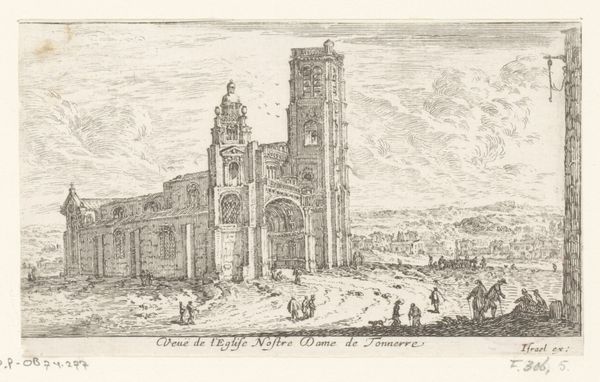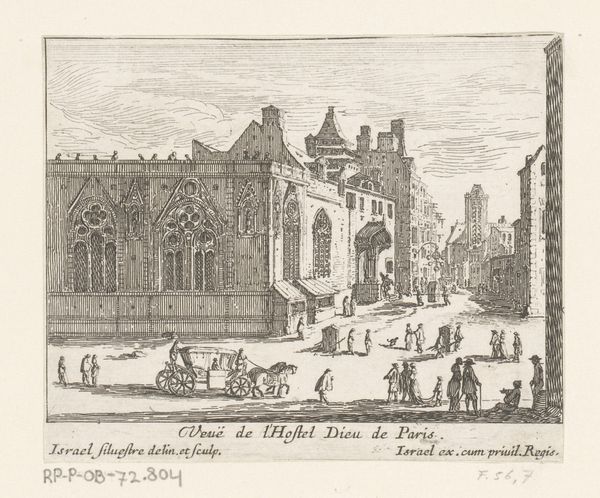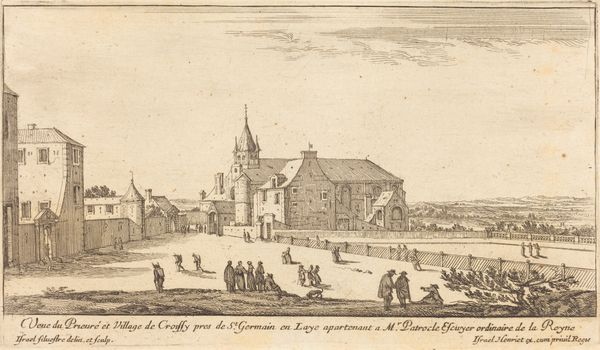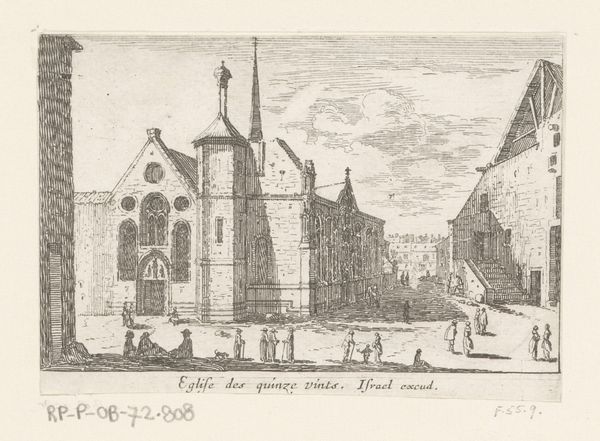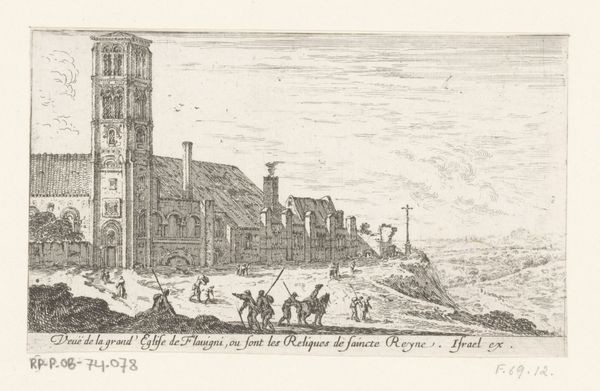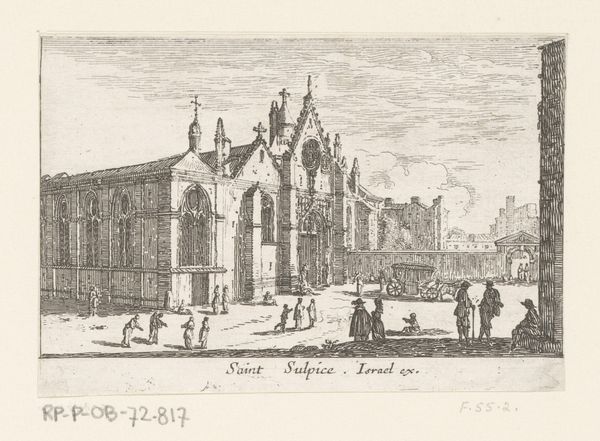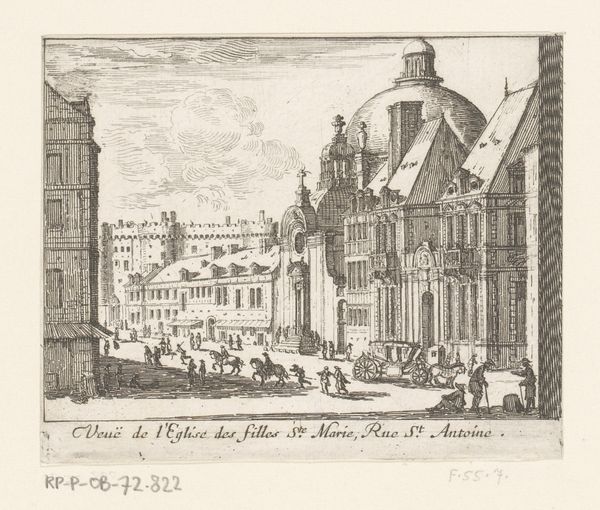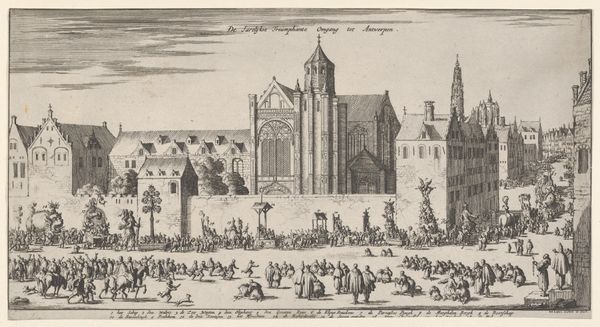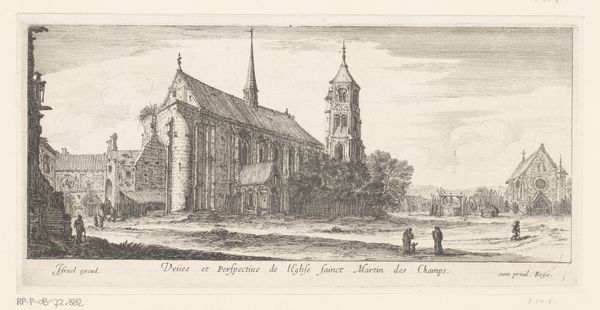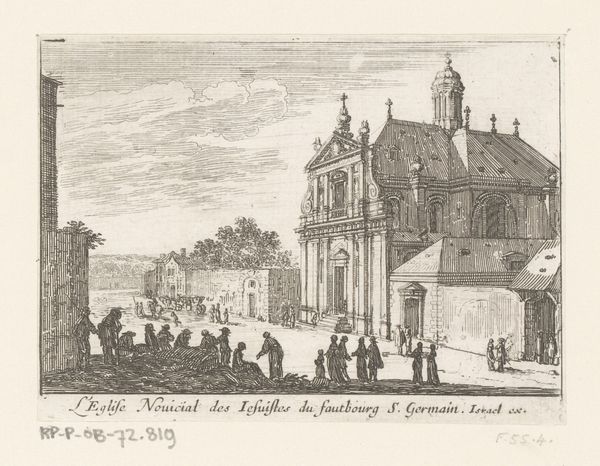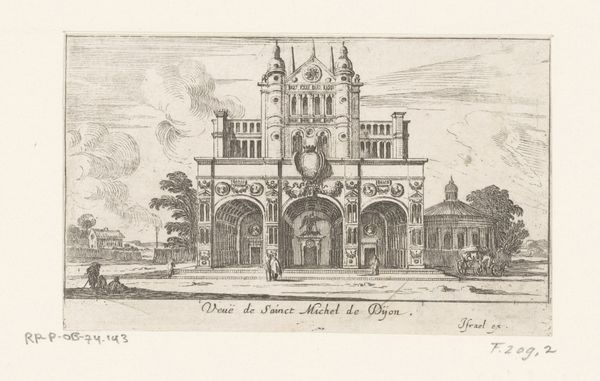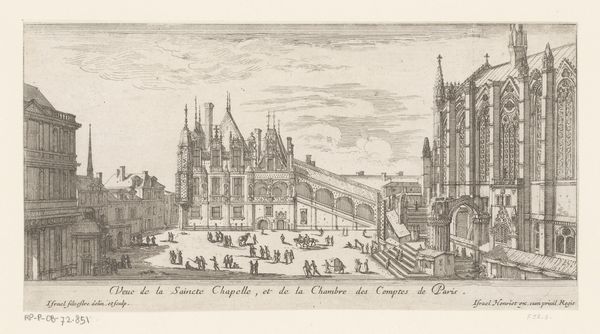
print, etching, architecture
#
architectural sketch
#
baroque
# print
#
etching
#
old engraving style
#
landscape
#
cityscape
#
architecture
Dimensions: height 70 mm, width 137 mm
Copyright: Rijks Museum: Open Domain
Editor: This etching by Israel Silvestre, "Gezicht op een deel van de kathedraal van Sens," dating from between 1631 and 1661, depicts a cityscape dominated by a Gothic cathedral. There’s something almost dreamlike about the hazy rendering of the buildings. What draws your eye when you look at this piece? Curator: My attention is immediately pulled towards the relationship between the sacred space of the cathedral and the public sphere surrounding it. Consider the power dynamics inherent in such architectural grandeur towering over everyday life. The cathedral, in its imposing scale, literally and figuratively casts a shadow on the figures below, reminding us of the Church's pervasive influence on social structures, and class divisions. Who was this monument for, and whose labor built it? Editor: So you see the etching as a commentary on the Church’s power? I hadn't really thought about that. Curator: Exactly. The etching isn't just a neutral depiction of architecture; it is a document embedded in a web of social and political forces. The very act of etching, the lines meticulously carved, mirrors the ways in which power is inscribed onto the landscape and our collective consciousness. Look closely at the figures; how might their postures and activities reflect or resist this overarching structure? Editor: I see what you mean. The people seem almost incidental to the grand scale of the church, yet their presence also makes it less imposing. Curator: Precisely! It's a tension between the individual and the institution. The composition highlights this duality, offering us a glimpse into the negotiations between faith, power, and the everyday experiences of the citizenry during that era. It invites us to question whose stories are told and whose are omitted. Editor: That gives me a lot to consider when looking at seemingly simple landscape art! Thanks for sharing your insights. Curator: And thank you for seeing the potential to unveil hidden narratives. It reinforces the necessity of applying an activist lens to even the most historical works.
Comments
No comments
Be the first to comment and join the conversation on the ultimate creative platform.
